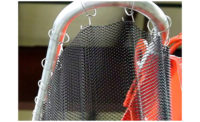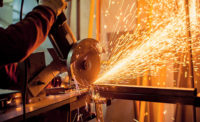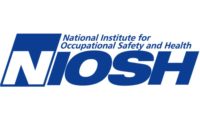Risk is a reality of any construction or industrial workspace. While the presence of risk is unavoidable, it’s how your business addresses hazards that really makes a difference. This isn’t just about maintaining general health and safety standards, though those are important. You also need to mitigate the specific risks of your industry or work site.
One of these hazards may be flying debris. Workers could be susceptible to chemical splashes or being struck by chips of industrial materials, among various other dangers. This can cause everything from mild inconvenience to serious long-term health issues.
Let’s take a moment to examine how your business can best approach preventing facial injuries caused by flying debris.
Review the risks
Adopting risk mitigation measures for a construction project or day-to-day industrial workflow is essential for keeping workers safe and the project on schedule. There are multiple approaches you can take when it comes to minimizing the potential for facial injury. Alongside automating repetitive tasks and ensuring good communication, some of the most important actions are those that help you to better understand and prepare for the specific risks in your workplace.
These actions tend to include:
Solid risk assessment procedures. At the outset of any project, review what tasks will be performed, the environment they’ll take place in, and even look at localized conditions such as weather. You can then assess past data on how frequently these elements have caused debris-related injuries and what influences incidents.
Building Information Modeling (BIM). This modeling process involves utilizing professionals from every part of the project to map out how their tasks factor into the lifecycle of the project. Part of this procedure can involve highlighting how each task affects facial injury risks and what can be done to prevent these.
Adopt physical safeguards
Once you have a good understanding of potential facial injury hazards, it’s important to implement effective safeguards. While it’s wise to boost awareness of debris with signs and warnings, it’s arguably more vital to establish physical safeguards. In essence, even when issues arise, these components create a barrier between debris and staff members.
Physical safeguards against facial injury can take various forms, including:
Personal protective equipment (PPE). Some of the basic struck-by-object PPE staff should wear includes safety eyewear to safeguard against dust or small particles and hard hats that deflect falling or flying objects. Full-brim hard hats with integrated face shields are particularly useful for protecting the face. There’s also an increasing amount of smart PPE, including augmented reality (AR) glasses and helmets with sensors that collect real-time data on risks so these can be communicated to workers.
Machine guards. With industrial equipment, among the most basic safeguards for preventing injury are effective static guards between the device and the operator. However, it’s important to regularly inspect these for integrity and make certain that staff continues to use them.
Train staff regularly
Construction and industrial site managers certainly have a responsibility to put protective measures in place. That said, one of the most important steps is to ensure staff can help themselves to mitigate facial injuries from flying debris. This means providing regular training. Make certain this education offers generalized site safety information alongside training that is relevant to the specific tasks or roles they are undertaking.
Some areas for focus could include:
Correct use of PPE and machinery safeguards. Simply providing PPE and other safeguards to staff is unlikely to be sufficient. You also need to make certain that they know how and when to utilize these correctly to mitigate injuries from debris. Indeed, it’s an Occupational Safety and Health Administration (OSHA) requirement to train employees who need PPE. This should include adjusting PPE to effectively cover the face and head area, alongside checking for integrity issues with their PPE before each shift.
Situational awareness. Employees should get to know what sights, sounds, and environmental factors can suggest potential debris risks in their workplace. The situational awareness training should involve spotting issues and what actions they should take. This should include highlighting the correct communication channels to report dangers to superiors and colleagues.
Identify effective healthcare resources
Minimizing facial injury risks isn’t just about preventing them from occurring at all, though this is certainly the ideal. Nevertheless, no matter how many precautions you take, incidents may still arise. Your business has a legal and ethical responsibility to reduce the risk of significant and long-term health issues resulting from facial injuries. Therefore, it’s vital to identify the most appropriate healthcare resources so you can put them in place for a swift and effective response.
Some effective resources may include:
Closest hospitals and clinics. During the planning stages of any project, there should be some attention to identifying the most appropriate hospitals and clinics for different types of injury. This should include not just emergency rooms, but also vision specialists, oral health experts, and cosmetic surgeons. Check that clinics are set up to address common eye injuries and facial trauma. Confirm that these providers are within the network of any employee health insurance the business maintains.
Cosmetic dental resources. Even when injuries aren’t life-threatening, there can still be cosmetic issues that your business should address. Among the most common cosmetic procedures are various types of dentistry. Facial injuries may require dental bonding to repair damaged teeth, veneers for teeth, or even whitening due to spills that have discolored teeth. It’s important to identify dental experts with experience specializing in these types of procedures to ensure staff get the best care.
Conclusion
Preventing facial injuries from flying objects is a must for construction and industrial businesses. This begins with gaining an understanding of the prevalent risks and then adopting physical safeguards alongside relevant training. It’s also vital to make certain employees have access to adequate health resources in the event of such accidents. Beyond adopting these measures, your business must commit to an ongoing process of assessment. This isn’t just to be sure the steps you’re taking continue to meet the needs of workers and OSHA regulations. It also gives you the chance to find process and technological improvements that keep staff safe from facial injuries.



